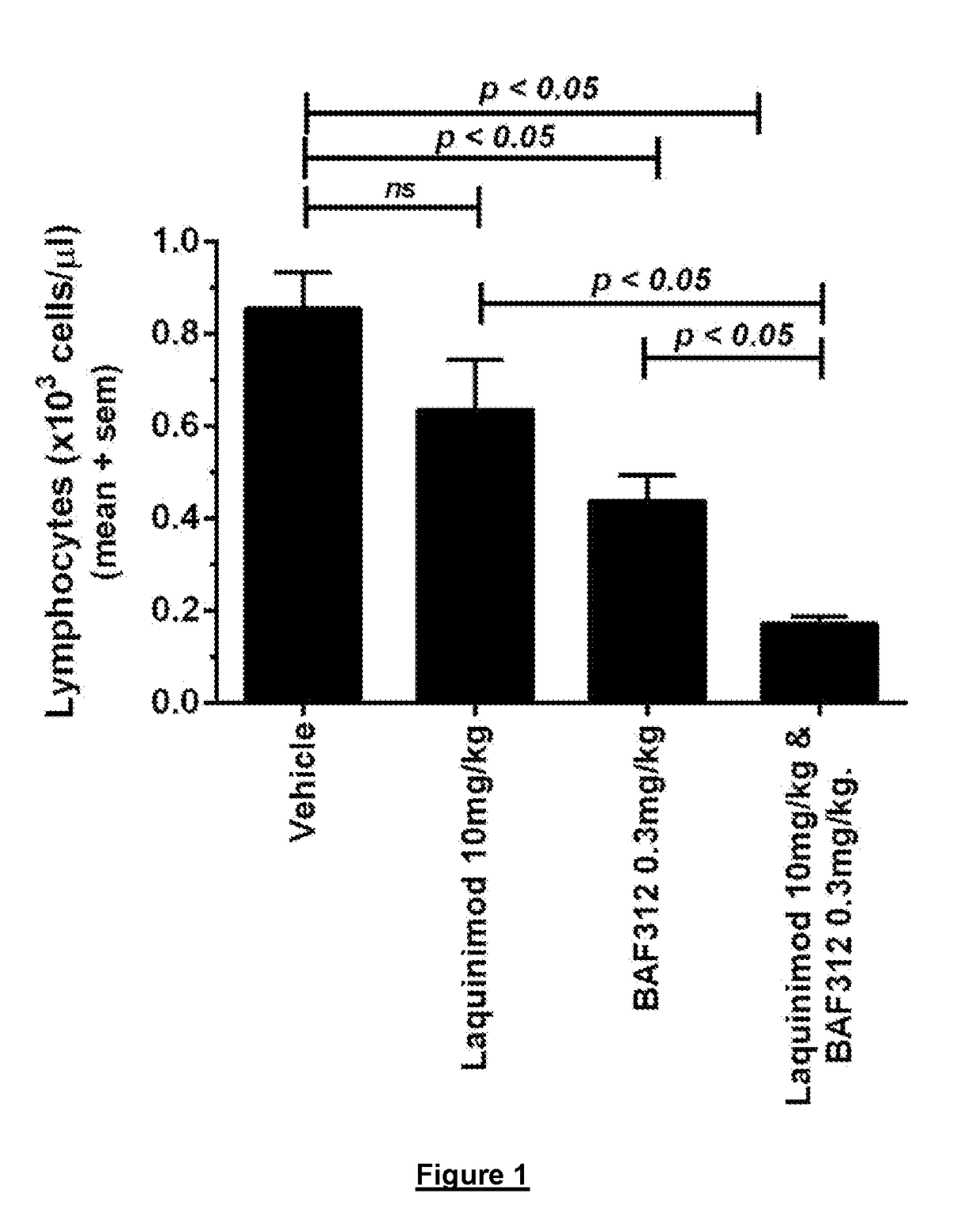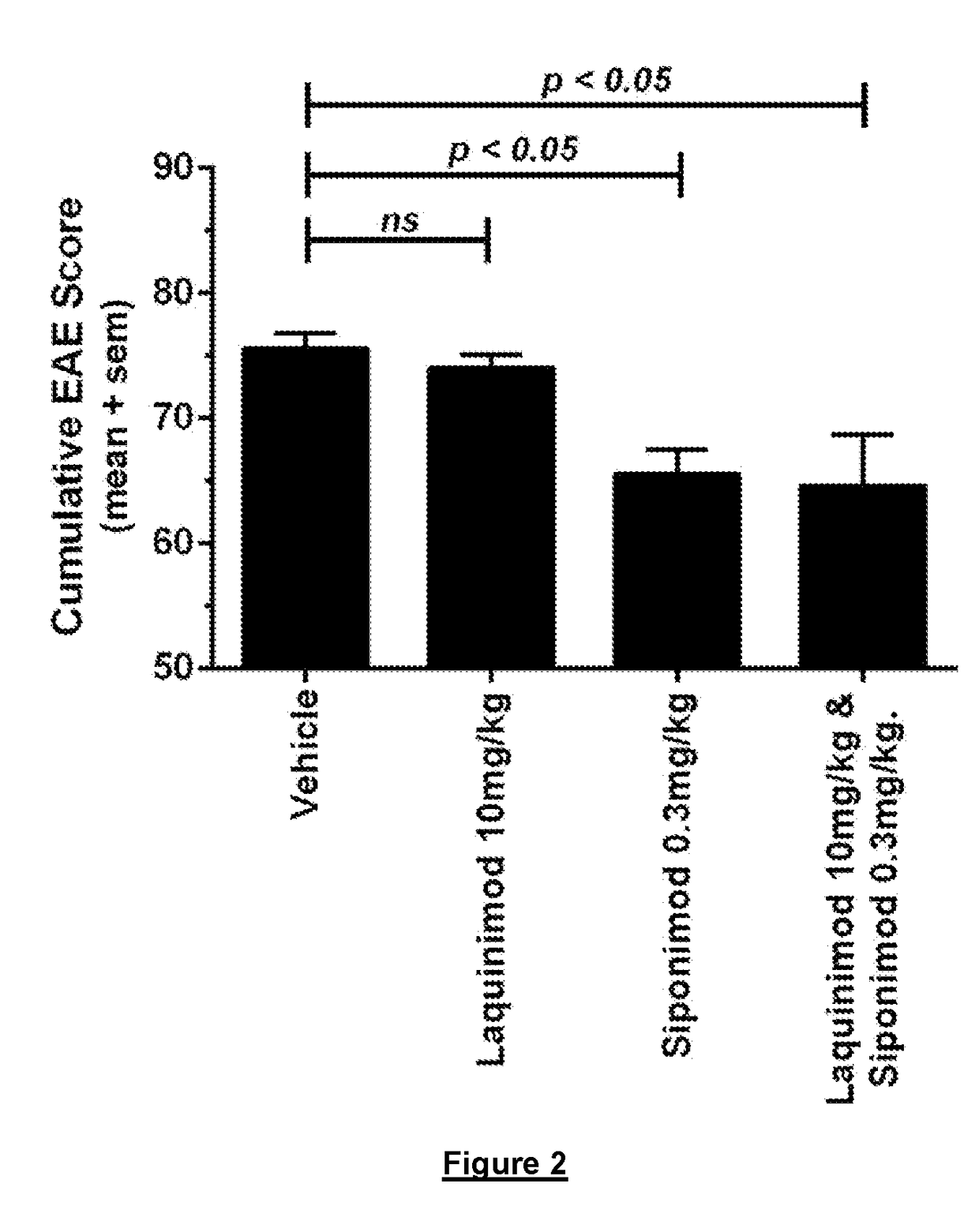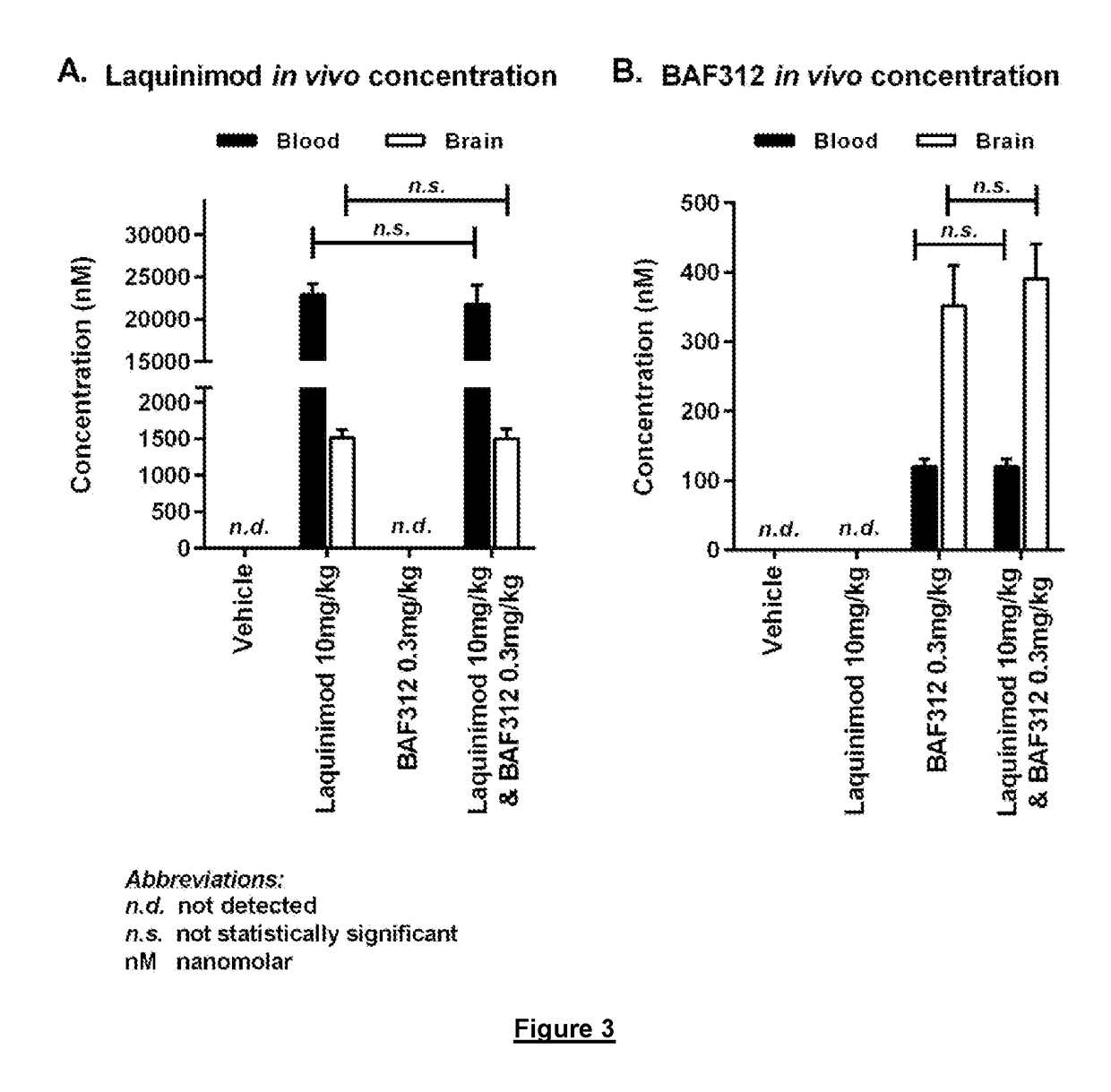Combinations comprising siponimod and laquinimod for the treatment of multiple sclerosis
a combination and multiple sclerosis technology, applied in the field of combination and pharmaceutical compositions comprising siponimod and laquinimod, can solve the problems of increased fatigue, increased weakness and incoordination, and increased neurologic impairment and disability, and achieves the effects of preventing or delaying the progression of autoimmune diseases, and reducing the number of lymphocytes
- Summary
- Abstract
- Description
- Claims
- Application Information
AI Technical Summary
Benefits of technology
Problems solved by technology
Method used
Image
Examples
example 1
Data from Animal Models
Example 1.1
Level of Siponimod in Cerebrospinal Fluid (CSF) in Mice
[0171]Female C57Bl / 6 mice were treated daily with 3 mg / kg siponimod, p.o. for 8 days. 8 hours after the last administration, animals were sacrificed and the levels of siponimod were measured in blood, brain and CSF.
[0172]Data is summarized in Table 1 below. Shown are mean values of 3-5 animals and standard error of the mean (in brackets).
TABLE 1Strain andDosesamplingconc siponimod (nM) (SEM)species(mg / kg, qd)daytimeBloodBrainCSFC57BI / 6 mice388 h973.3 (62.1)5552 (298)7.2 (1) C57BI / 6 mice,388 h1600 (79) 9193 (310)17.7 (3.2)EAE
[0173]This shows that a clinically relevant dose of siponimod (3 mg / kg in mice) leads to exposures in the CSF above the EC50 for S1P1 (0.4 nM) and S1P5 (1 nM).
Example 1.2
Use of Siponimod, Laquinimod and Combinations Thereof to Reduce Lymphocytes in MOG / CFA / Pertussis Toxin-Treated C57 / Bl6 Mice
[0174]Female C57Bl / 6 mice were subcutaneously immunized with 200 μg recombinant MOG1-...
example 1.2
Use of Siponimod, Laquinimod and Combinations Thereof to Treat MOG / CFA / Pertussis Toxin-Immunized Experimental Autoimmune Encephalomyelitis (EAE) in C57 / Bl6 Mice
[0176]Female C57Bl / 6 mice were subcutaneously immunized with 200 μg recombinant MOG1-125 in CFA followed by one i.p. injection of 100 ng Pertussis toxin. Two days later an additional i.p. injection of 100 ng pertussis toxin was administered. Three days after the first clinical symptoms, the mice were randomized to either vehicle, 0.3 mg / kg siponimod, 10 mg / kg laquinimod or 0.3 mg / kg siponimod+10 mg / kg laquinimod and treated daily with said doses for 30 days. Treatment initiated after severe CNSneurological disease and tissue damage has occurred. More specifically after that a severe CNS damage, which can be characterized by hind limb paralysis, had already occurred.
[0177]Results are shown in FIG. 2. Treatment with 10 mg / kg laquinimod did not significantly improve disease burden (cumulative EAE score). Treatment with 0.3 mg / kg...
example 1.3
Level of Siponimod and Laquinimod in Blood and Brain Tissue Durinq Experimental Autoimmune Encephalomyelitis (EAE) in C57 / Bl6 Mice
[0178]Female C57Bl / 6 mice were subcutaneously immunized with 200 μg recombinant MOG1-125 in CFA followed by one i.p. injection of 100 ng Pertussis toxin. Two days later an additional i.p. injection of 100 ng pertussis toxin was administered. Mice were dosed with either vehicle, 0.3 mg / kg siponimod, 10 mg / kg laquinimod or 0.3 mg / kg siponimod+10 mg / kg laquinimod for up to 21 days. Treatment initiated after immune cells have entered the CNS resulting in paralysis and localised tissue damage.
[0179]Results are shown in FIG. 3. Combination therapy did not significantly alter either the blood or brain concentration of siponimod or laquinimod. There was no evidence of drug-drug interactions. The efficacy of combination therapy represents an enhanced biological response. No statistical significance p>0.05.
PUM
| Property | Measurement | Unit |
|---|---|---|
| weight | aaaaa | aaaaa |
| weight | aaaaa | aaaaa |
| weight | aaaaa | aaaaa |
Abstract
Description
Claims
Application Information
 Login to View More
Login to View More - R&D
- Intellectual Property
- Life Sciences
- Materials
- Tech Scout
- Unparalleled Data Quality
- Higher Quality Content
- 60% Fewer Hallucinations
Browse by: Latest US Patents, China's latest patents, Technical Efficacy Thesaurus, Application Domain, Technology Topic, Popular Technical Reports.
© 2025 PatSnap. All rights reserved.Legal|Privacy policy|Modern Slavery Act Transparency Statement|Sitemap|About US| Contact US: help@patsnap.com



